MARIANI’S
Virtual
Gourmet
March 22,
2015
NEWSLETTER
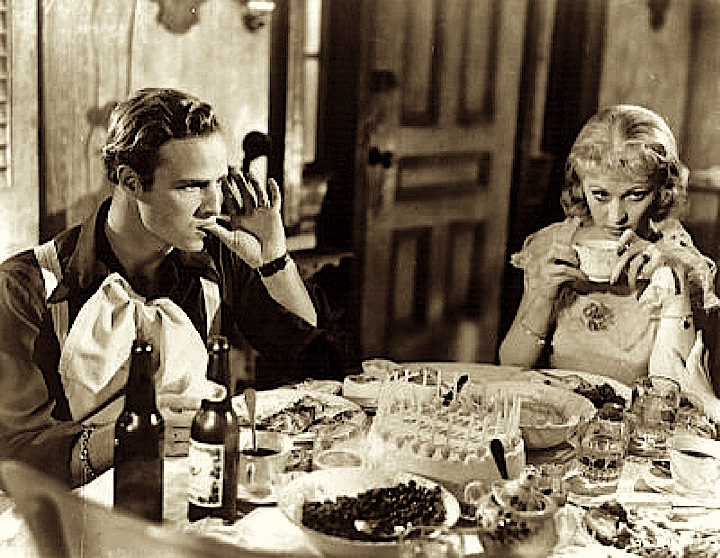
Marlon
Brando and Vivien Leigh in "Streetcar Named
Desire" (1951)
IN THIS ISSUE
CHARLESTON CELEBRATES ITS CULINARY ROOTS
By John Mariani
NEW YORK CORNER
MASSERIA DEI VINI
By John Mariani
ELEGY FOR A GREAT RESTAURATEUR:
R.I.P. DICK BRENNAN
BY JOHN MARIANI
NOTES FROM THE WINE CELLAR
MICHAEL MONDAVI WINES ARE A FAMILY AFFAIR
By John Mariani
❖❖❖
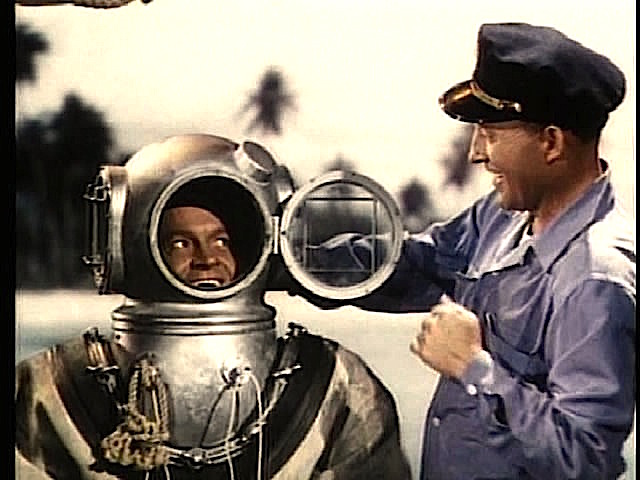
ANNOUNCMENT: There will be no edition of Mariani's Virtual Gourmet Newsletter next week because Mariani will be on vacation. The next edition will be April 5.
❖❖❖
CHARLESTON CELEBRATES
ITS CULINARY ROOTS
By John Mariani
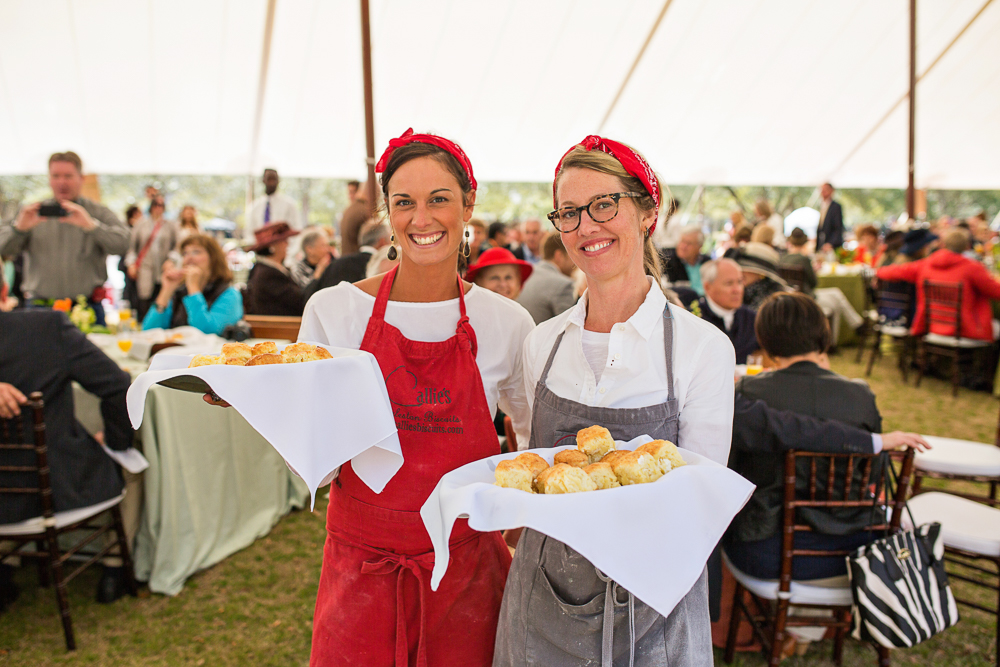
Photo by Andrew Cebulka
For ten years now Charleston has been holding an
annual Wine +
Food Festival that has become one
of the 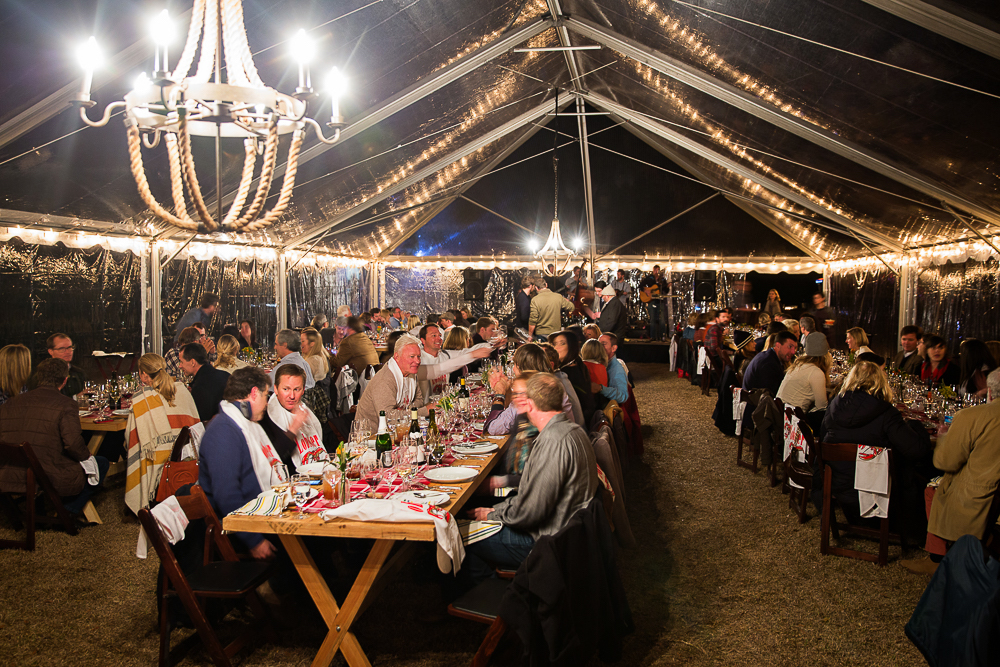 stellar
events of the springtime and one that brings a
great number of visitors and millions of dollars
to the city. I’ve been delighted to have attended
most years’ celebrations and hosted a few events,
seminars and book signings along the way.
stellar
events of the springtime and one that brings a
great number of visitors and millions of dollars
to the city. I’ve been delighted to have attended
most years’ celebrations and hosted a few events,
seminars and book signings along the way.
The "Heart of the
Festival" is the tented Culinary Village at Marion
Square, where back-to-back demos, Low Country
excursions, signature dinners, fish fry (right), book
signings, storytelling, gospel brunch (above) and
music jams are held throughout each day. Testament
to the success and popularity of the Festival is not
just that it's grown steadily but that its various
events sell out weeks in advance.
What I like best about this Festival,
as opposed to those in cities like Aspen and Miami,
is that the latter depend on glitz and the same
tired TV food and travel show celebrities, while
Charleston celebrates new people each year, largely
local but also working chefs of regional fame that
they well deserve.
Photo
by Andrew Cebulka
This
year the line-up of chefs included local notables
like Michelle Weaver (Charleston Grill), Sean Brock
(Husk), Mike Iata (Fig), Frank McMahon (Hank’s),
Craig Deihl (Cypress) and Frank Lee (Slightly North
of Broad), along with national figures like Jonathan
Benno (Lincoln Ristorante, NY), Chris Shepherd
(Underbelly, Houston), Lincoln Hopkins (Eugene,
Atlanta), and Andrew Zimmerman (Sepia, Chicago).
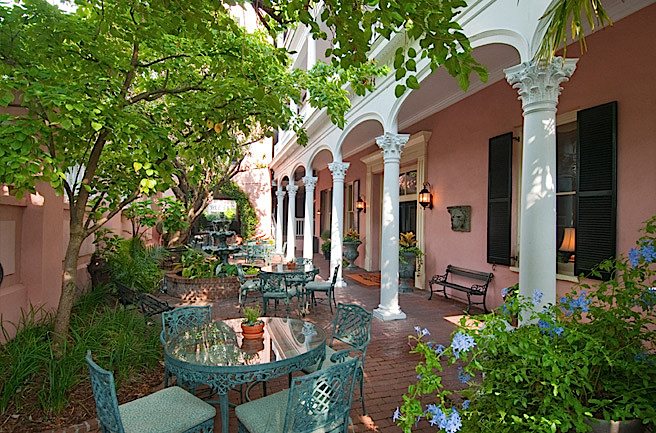 The wine
component—not to mention beer, booze and cider—this
year involved seminars and tastings of Harlan
Estates, Michael Mondavi, Veuve Clicquot, Quntessa, and
others. Add
to all this the beauty of Charleston itself—its
byways, Battery, markets, and water—and three days
go by very fast and beg for you to return. I
certainly intend to, if only to keep up with what’s
new.
The wine
component—not to mention beer, booze and cider—this
year involved seminars and tastings of Harlan
Estates, Michael Mondavi, Veuve Clicquot, Quntessa, and
others. Add
to all this the beauty of Charleston itself—its
byways, Battery, markets, and water—and three days
go by very fast and beg for you to return. I
certainly intend to, if only to keep up with what’s
new.
New, to me
at least, was the Meeting Street Inn (left)--one of
three run by Historic Charleston Inns--where I
stayed, a quiet bed-and-breakfast operating for the
past 50 years located just shy of the City
Market. There are nine rooms with very comfortable
poster beds, a wading pool and garden, and they put
on quite a spread for breakfast, including biscuits
and gravy, along with afternoon tea and sherry in
the evening. Bathroom facilities, as is so often the
case in B&B’s, are drab and outdated. Wi-Fi is
free.

843-641-7299
artisanmeatsharecharleston.com
Very new indeed is Artisan Meat
Share, a sandwich and charcuterie shop on
Spring Street that grew out of 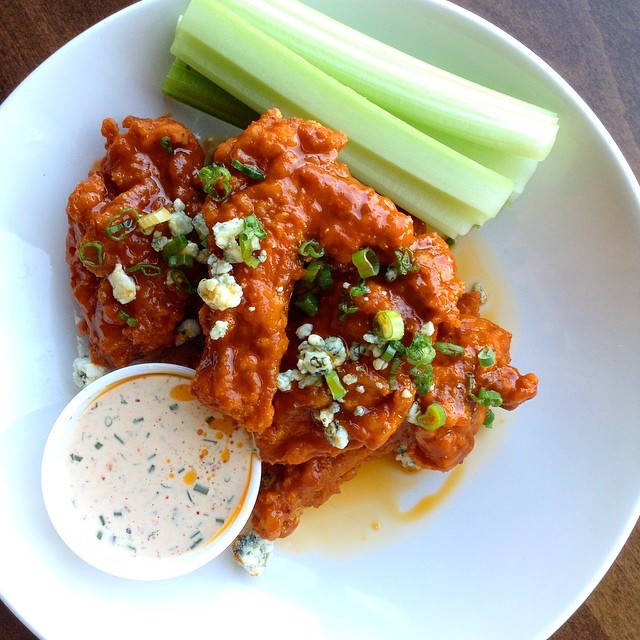 Chef Craig Deihl’s
charcuterie program at the superb downtown
restaurant Cypress.
Deihl
(above) is
a founding member of the Butcher’s Guild, and in any
given season makes an array of 80 varieties of meat
products that are among the finest I’ve tasted
anywhere in this country.
Chef Craig Deihl’s
charcuterie program at the superb downtown
restaurant Cypress.
Deihl
(above) is
a founding member of the Butcher’s Guild, and in any
given season makes an array of 80 varieties of meat
products that are among the finest I’ve tasted
anywhere in this country.
At Artisan Meat Share, which is a slip of a
room with a butcher counter on one side and a very
few wooden chairs and booths on the other,
sandwiches are as big a draw as the myriad
sausages, salumi, and breads people come by to
purchase. (They
also do corporate boxed lunches.)
I just left myself in
Deihl’s hands and out came rafter after rafter of
exquisite meats and cheeses—liverwurst, provolone, mortadella,
coppa, pepper rings, potato bread, bean salad,
cheese grits and gravy, pastrami, bratwurst, crostini, chicken wings (right)
and more. His bun
mi ($10) of pâté, smoked ham, kimchi mayo,
carrots, soy pickles, cilantro on a steamed bun was a wonder in
a Low Country spot like this, as was the porchetta ($11)
with spicy ‘nduja
condiment, pork cracklins’, watercress, caramelized
onions and mayo on ciabatta
bread.
There are beer and wine and artisanal sodas,
and on Wednesdays they offer three pieces of fried
chicken for $10 and a wine and meat tasting on the
first Thursday of every month. So much goodness in
such profusion; this is a very generous eatery with
a big heart.
Artisan Meat Share is open daily from 11 AM to 7 PM.

843-531-6500
leonsoystershop.com
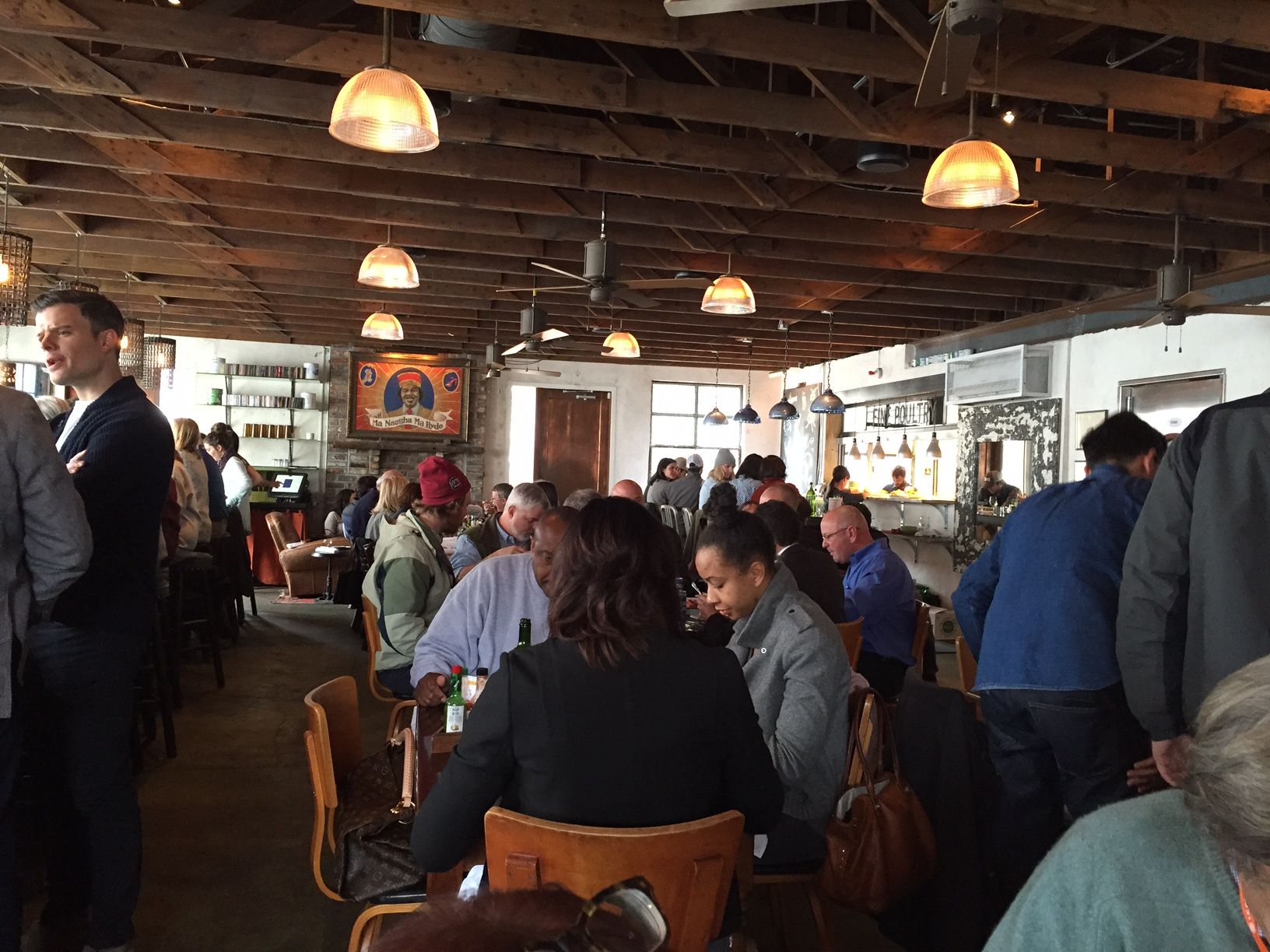 Also
new in the city is Leon’s,
on the West Side of town, about which I heard
much for being the new hit in town. Opened last May,
it’s a very casual, ear-splitting eatery with a
focus on oysters and a dogged emphasis on fried food
in the Southern tradition. It’s a first-come-first-served
kind of place, so it’s usually jammed with people
who come to chow down rather than dine at a
leisurely pace.
You’ll probably get food or beer on your
clothes.
Also
new in the city is Leon’s,
on the West Side of town, about which I heard
much for being the new hit in town. Opened last May,
it’s a very casual, ear-splitting eatery with a
focus on oysters and a dogged emphasis on fried food
in the Southern tradition. It’s a first-come-first-served
kind of place, so it’s usually jammed with people
who come to chow down rather than dine at a
leisurely pace.
You’ll probably get food or beer on your
clothes.
I had a couple of good items: a
charred radicchio salad with yogurt dressing,
hazelnuts, golden raisins and mint ($10), and Leon’s
vanilla soft serve ice cream for dessert ($3). Most
other dishes I found, first of all, extremely salty,
and second, extremely fried. This
ruined a made-to-order serving of fried chicken
($8-$10 for two pieces, half a chicken $16 and whole
chicken dinner $39), whose spices were more intense
than Popeye’s, obliterating whatever flavor the
chicken itself had; its grease-absorbed dark brown,
burnt breading fell from the meat. Lettuce
wraps had equally salty fried clams, along with
mayo, slaw and butter pickles ($12). The fish
sandwich ($13) may be ordered grilled or fried. A whole
fish of the day--grilled beeline snapper with
seaweed butter, artichokes and lemon ($32)--would
have been better had it not been undercooked that
day.
My friends who gobbled up
a selection of oysters seemed perfectly happy with
their choice, so I would say that, if you go to
Leon’s, stay clear of the fried food. And bring
noise-canceling earphones. The loud, bombastic music is
rough.
The
MacIntosh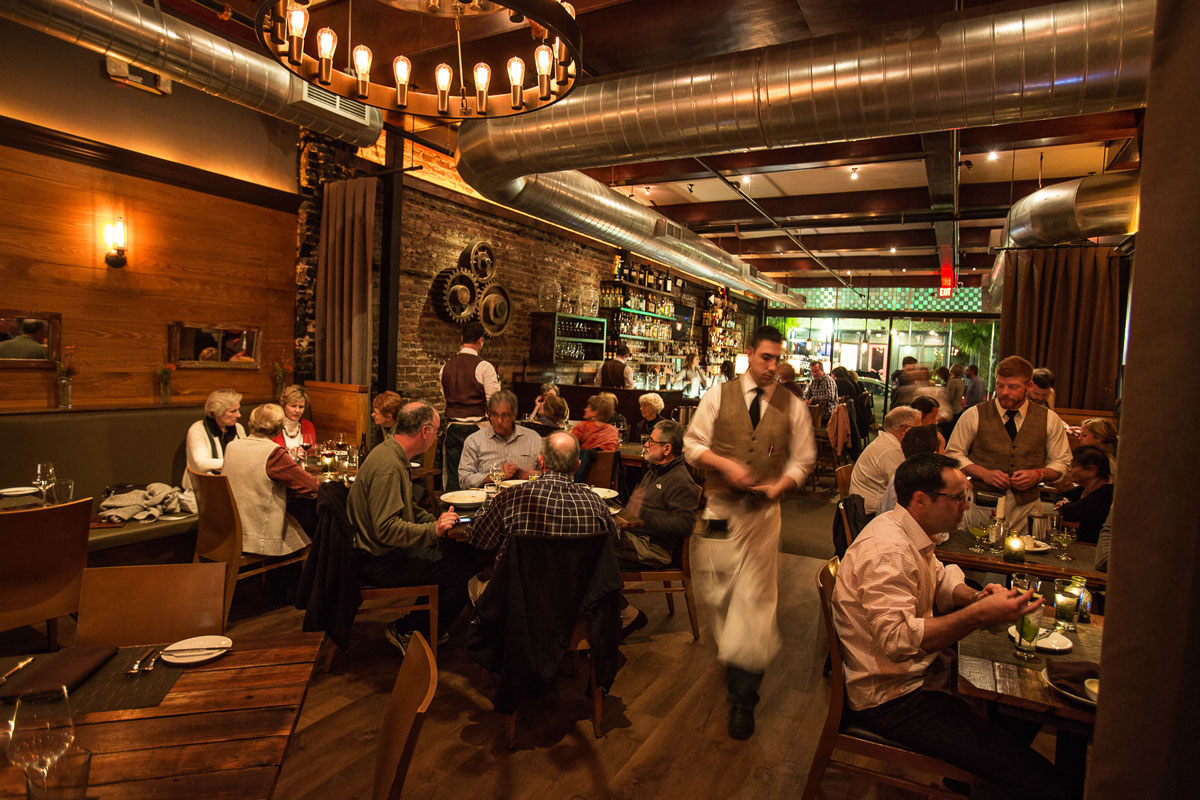
479B King Street
843-789-4299
www.themacintoshcharleston.com
I was very much
looking forward to getting back to one of
Charleston’s finest restaurants, The MacIntosh,
which opened two years ago on two levels on King
Street, where Jeremiah Bacon has proven himself one
of the city’s most inventive chefs at a time when
others are playing the farm-to-table game more for
publicity than out of true religion.
Upstairs at The MacIntosh there’s
a loud bar and lounge scene, but downstairs is a
long, brick-walled dining room that casts the right
balance of casualness with the seriousness of fine
food. (You may want to ask them to turn the music
down.)
Bacon is a hearty cook with
unexpected finesse, as evident in his oxtail ravioli
with onion soubise
and rich bordelaise sauce ($14). And his signature
use of beef deckle ($40), a dish of great largess
involving an underutilized cut of meat with
marvelous results, served with enriching bone marrow
bread pudding, carrots, baby onions, Brussels
sprouts and a deep reduction of red wine (below) is a
magnificent dish that takes a lot of talent to bring
off so successfully. But then even a seemingly
simple plate of peas and carrots with gnudi
pasta, lamb neck, onions and mint 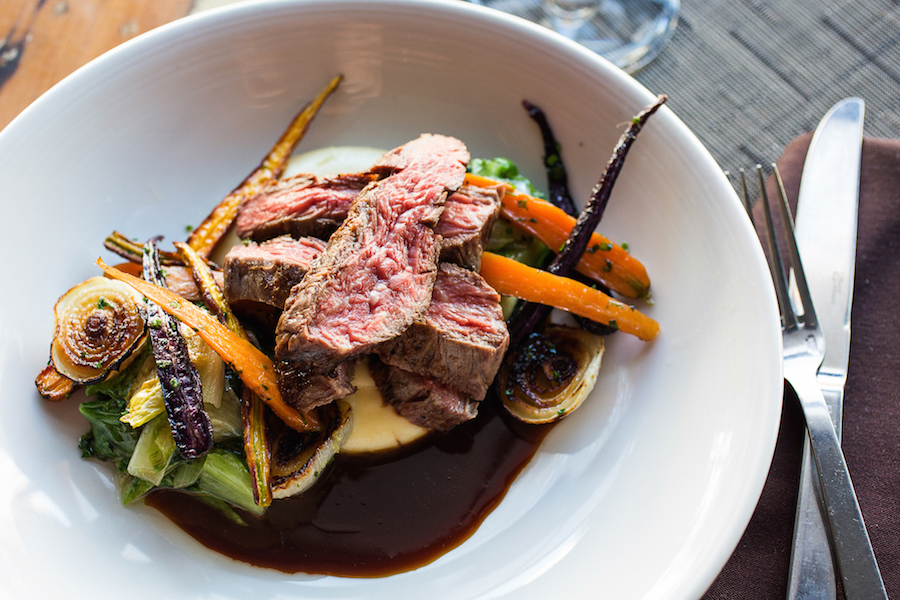 ($16) is an education in the cooking
timing of individual ingredients. His sweetbreads
($15) have real flavor on their own, coaxed to
another level by the addition of green garlic, benne
seeds, maitakes,
a caramel made from fish sauce, and shiso. The
tender texture and sweetness of pea ragoȗt enhances a
thick cut of succulent pork shoulder, with a fennel
marinade and bacon sorghum glaze ($27).
($16) is an education in the cooking
timing of individual ingredients. His sweetbreads
($15) have real flavor on their own, coaxed to
another level by the addition of green garlic, benne
seeds, maitakes,
a caramel made from fish sauce, and shiso. The
tender texture and sweetness of pea ragoȗt enhances a
thick cut of succulent pork shoulder, with a fennel
marinade and bacon sorghum glaze ($27).
Every bit as sumptuous
are Kelly Kleisner’s desserts, like double chocolate
torte with raspberry sorbet and coca nib tuile ($8)
and banana bread pudding with malted chocolate ice
cream and butterscotch, toffee-cocoa crumble ($8).
The MacIntosh has as fine a wine
list as it has one of spirits, and it would be
difficult not to have a good time here, both for its
conviviality and for the surprise of how, dish by
dish, everything is so amazingly good.
HOMINY
GRILL
207 Rutledge Street
843-947-0930
.hominygrill.com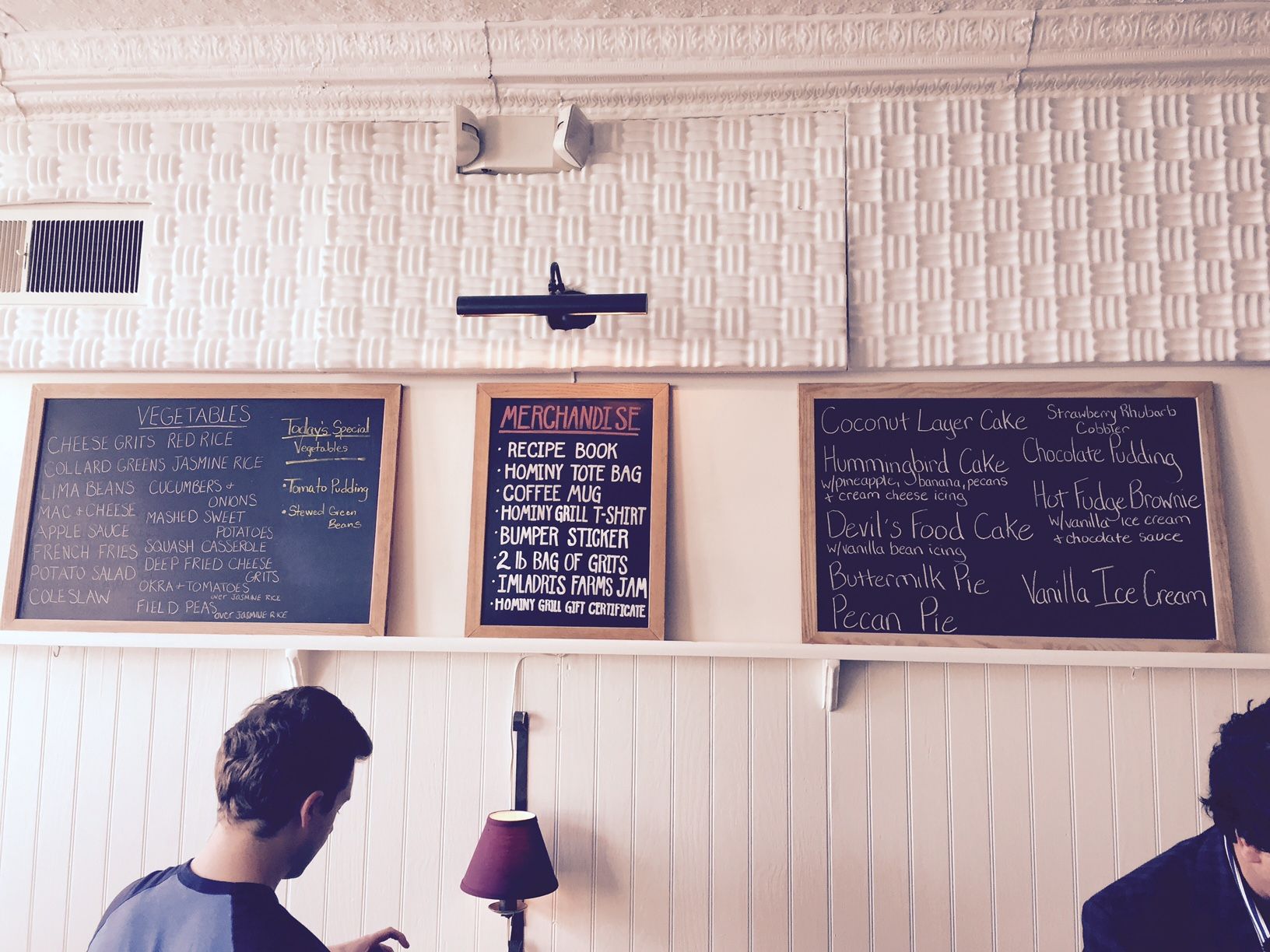
Rare is the year I go to
Charleston without eating at The Hominy Grill, which
since 1966 has been a bellwether of Southern
downhome cooking without the slightest pretense or
hype—although the food media have long acknowledged
just how outstanding chef-owner Robert Stehling is
as a proud son of the South.
The white shotgun house dates to
1897, recently appended with another dining room,
and it is always bright, with antique tin ceilings
and slow-moving fans, wooden floors, captain’s
chairs, and windows that let in the Low Country sun.
Added sound-proofing has tamped down the once
harsh decibel level. You could not wish for a more
amiable, friendly staff, which is crucial to keep
the long lines of waiting guests at bay in the hot
South Carolina sun.
Stehling
knows his clientele well, and I suspect as many are
locals as visitors, all of whom will wait a while
for a table in peak hours. I’ve never had better soft
shell crabs with baked cheese grits; scrambled eggs,
buttermilk pancakes and country ham for breakfast;
and lovely, pale yellow buttermilk pie tinged with
lemon and lavished with whipped cream.
In contrast to the many versions
of disappointing fried chicken found around
Charleston, Hominy Grill’s is nonpareil: lightly
floured, very carefully fried to achieve an even,
golden color, the meat inside very juicy; it is
everything that Southerners exalt but so rarely make
this well. And
the breading never crumbles off the chicken here; it
stays intact, so every bite has crunch.
Long before the food media
discovered that Charleston was a first-rate
restaurant town, Hominy Grill was here, and it is as
good as ever, if not better. If practice does indeed
make perfect, then the cooks at Hominy Grill must
practice very hard and with a lot of care in what
they do.
Open for lunch Mon.-Fri., for brunch
Sat. & Sun., and for dinner Mon.-Sat.
❖❖❖
NEW YORK CORNER
By John Mariani
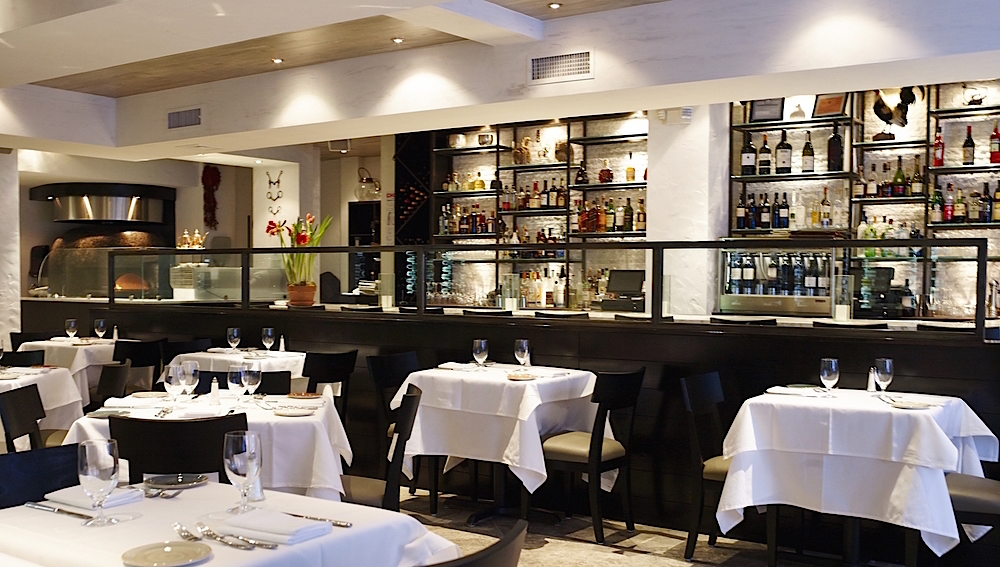
MASSERIA DEI VINI
887 Ninth Avenue
212-315-2888 (near 57th Street)
The
two-month old Masseria dei Vini is a restaurant
whose neighbors keep telling owners Giuseppe
"Peppe" Iuele, Enzo Ruggiero and chef-partner
Giuseppe Coladonato how glad they are finally to
have a fine Italian restaurant because there’s
nothing else like it in its neck of the woods,
near Carnegie Hall. It’s true. The neighborhood
has been devoid of an Italian restaurant of
Masseria dei Vini’s caliber—only Patsy’s
and Circo
to the east and Lincoln
Ristorante to the north are true
competitors, just as the owners’ first restaurant,
La
Masseria, has only Barbetta
and Orso
as competition in the Theater District of the West
40s.
What Iuele, Ruggiero and
Coladonato did at La Masseria upon opening eleven
years ago was to build a ristorante
with staying power, based on excellent Italian
cuisine with a Southern accent and on a commitment
to highly cordial service, even when dealing with
the fretting pre-theater crowd. The
moment you step through the door at their new
place, you’ll find that same warmth of
conviviality from the welcome and seating to the
attention paid to your table throughout the
evening.
Masseria dei Vini is a very
smart looking place, by interior designer Libby
Langdon, far more than I expected from what was
originally intended to be a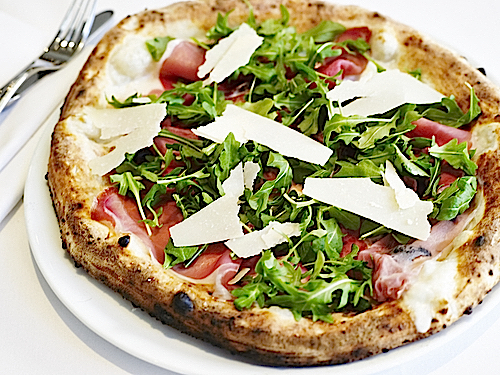 casual
wine bar (the name means “farmhouse of wines”).
But, as Iuele explained to me, “Once we got near
opening, we said why don’t we also do some pizzas,
more pastas and main courses, and before we knew
it, we had a full-fledged ristorante.” The
menu listings at both restaurants are quite
similar, though the older La Masseria does not do
crudi
(raw fish) or pizzas, and its prices are somewhat
higher pretty much across the board.
casual
wine bar (the name means “farmhouse of wines”).
But, as Iuele explained to me, “Once we got near
opening, we said why don’t we also do some pizzas,
more pastas and main courses, and before we knew
it, we had a full-fledged ristorante.” The
menu listings at both restaurants are quite
similar, though the older La Masseria does not do
crudi
(raw fish) or pizzas, and its prices are somewhat
higher pretty much across the board.
The trick in Italian cookery is
to intensify flavors that, without just the right
amount of seasoning, might be bland or taste just
like everyone else’s version. Thus,
at Masseria dei Vini, Chef Colodonato, who is from
Bari, takes the idea of polpettine
and instead of using meat he makes eggplant balls
to be dipped into a vibrant tomato and basil sauce
($14.50). But
he also does
do meatballs the same way ($17.50), so you have a
delectable choice to make, or order both. Another
turn on tradition are the panzerotti (“little
fat
bellies”) pumped up like a zeppole,
with a golden-brown crust and a filling of oozing
cheese and tomato ($14.50).
The
pizzas are expertly made in the Neapolitan style,
with a slightly puffy, nicely scorched and bubbly
crust. I loved the Calabrese-style version topped
with mozzarella fior di latte with sausage,
spicy-hot ‘nduja
condiment, and tomato sauce ($19), which will feed
four as an appetizer.
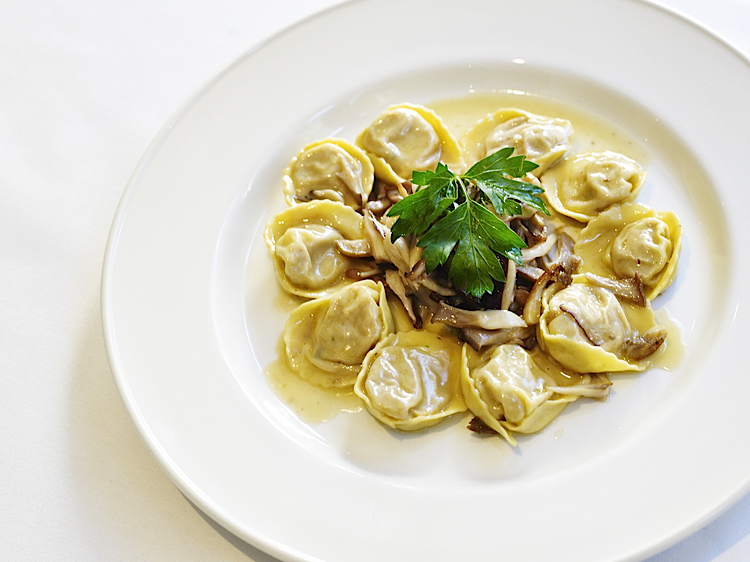 Ravioli
di Angelina ($19.50 for a full portion) is
made not with ricotta but with caciotta cheese in
a light Caprese tomato sauce, while orecchiette
alla Barese with broccoli di rabe and
sausage ($18.50) was perfectly cooked so that the
ear-shaped pasta had the right texture to stand
with the chewy vegetable and the crumbly sausage. This
careful attention to texture also distinguishes
housemade squid ink spaghetti with baby clams in a
white wine sauce ($21.50), and a triangular
ravioli stuffed with shrimp and avocado in a
shrimp-tomato sauce ($21.50).
Ravioli
di Angelina ($19.50 for a full portion) is
made not with ricotta but with caciotta cheese in
a light Caprese tomato sauce, while orecchiette
alla Barese with broccoli di rabe and
sausage ($18.50) was perfectly cooked so that the
ear-shaped pasta had the right texture to stand
with the chewy vegetable and the crumbly sausage. This
careful attention to texture also distinguishes
housemade squid ink spaghetti with baby clams in a
white wine sauce ($21.50), and a triangular
ravioli stuffed with shrimp and avocado in a
shrimp-tomato sauce ($21.50).
Bocconcini di
pollo ($21.50) is a large platter of
boneless chicken with mushrooms and shallots in a
red wine reduction, while a pork chop comes with
slices of black truffles at a very reasonable
$29.50—a terrific dish. For those who rave about the
big $50 veal parm at Carbone
in Greenwich Village, I invite you to try to
finish the marvelous, crisp, full-flavored pounded
veal chop with arugula and tomato salad at
Masseria dei Vini at just $38.50. And if
you go for seafood, the oven-roasted orata
($28.50) absorbs just the right amount of flavor
and piquancy from cherry tomato sauce, olives and
capers.
Desserts are traditional and well rendered,
from a light Italian cheesecake to a torta
Masseria scented with limoncello.
Since Vini figures in the
restaurant’s name, you can be assured of a stellar
group of wines, many displayed on a lighted wall
in the dining room.
So the Carnegie Hall
neighborhood has what it’s long lacked—a first-rate,
welcoming Italian restaurant that is likely to
flourish for decades to come.
Masseria dei Vini is
open for lunch and dinner daily.
❖❖❖

RICHARD BRENNAN DIES AT THE AGE OF 83
I knew Dick pretty well, but I could not write
anything better about him than his children
Dickie and Laurie have in this obituary they
were kind enough to send me:
This past Saturday evening,
our father, Richard J. Brennan, Sr. (better
Our Dad was kind, gentle and giving. A mentor,
visionary, leader and
Dad
was the second youngest of six children, in what
would become a
In high school at St. Aloysius,
he was a star basketball
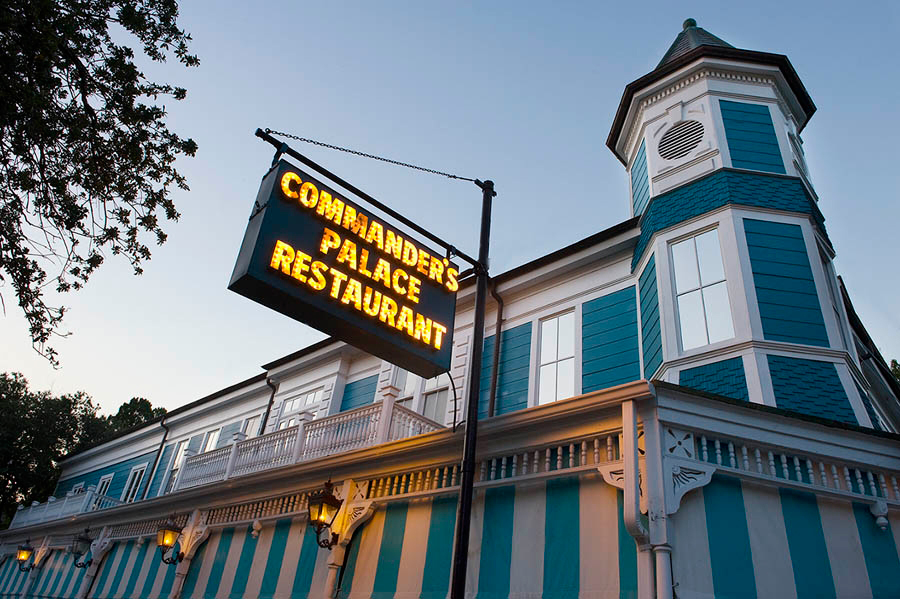 When he
returned to New Orleans, he intended to finish Law
school but his brother, Owen, and both parents
passed away within a year of one another, he
instead went to work at the family's restaurant,
Brennan's
When he
returned to New Orleans, he intended to finish Law
school but his brother, Owen, and both parents
passed away within a year of one another, he
instead went to work at the family's restaurant,
Brennan's
Dad was
passionate about New Orleans and America. He
recognized the sheer bounty of our region,
including ingredients and talent. Instead of
European chefs, he hired from the area. Chef Paul
Prudhomme and Dad collaborated on dishes that
today have become synonymous with New Orleans
cuisine.
He walked to work each day from our home on Third
St., and each day he passed a pecan tree. He
wondered why almonds were used to coat fish and
not pecans that were grown locally? From this
simple question posed to Chef Prudhomme, pecan
crusted fish was born.
The same could be said about his taste in spirits.
He featured
When
Dad and his siblings first bought Commander's,
their goal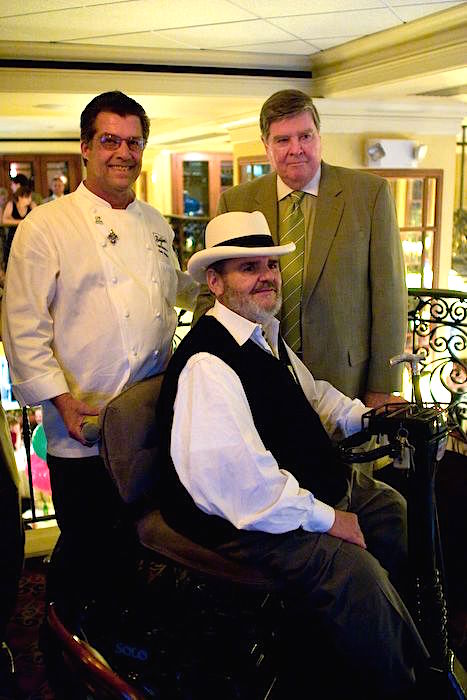
Breakfast at Brennan's
had been very popular and they wanted to create a
similar environment filled with celebration for
brunch. It was Dad who thought that two of New
Orleans most valued cultural possessions-- food
and Jazz--would make a fantastic marriage as "Jazz
Brunch." On Saturday, my sister and I, along with
our cousins headed downtown on the streetcar
Passionate about all things New Orleans, and
wanting to share his city's
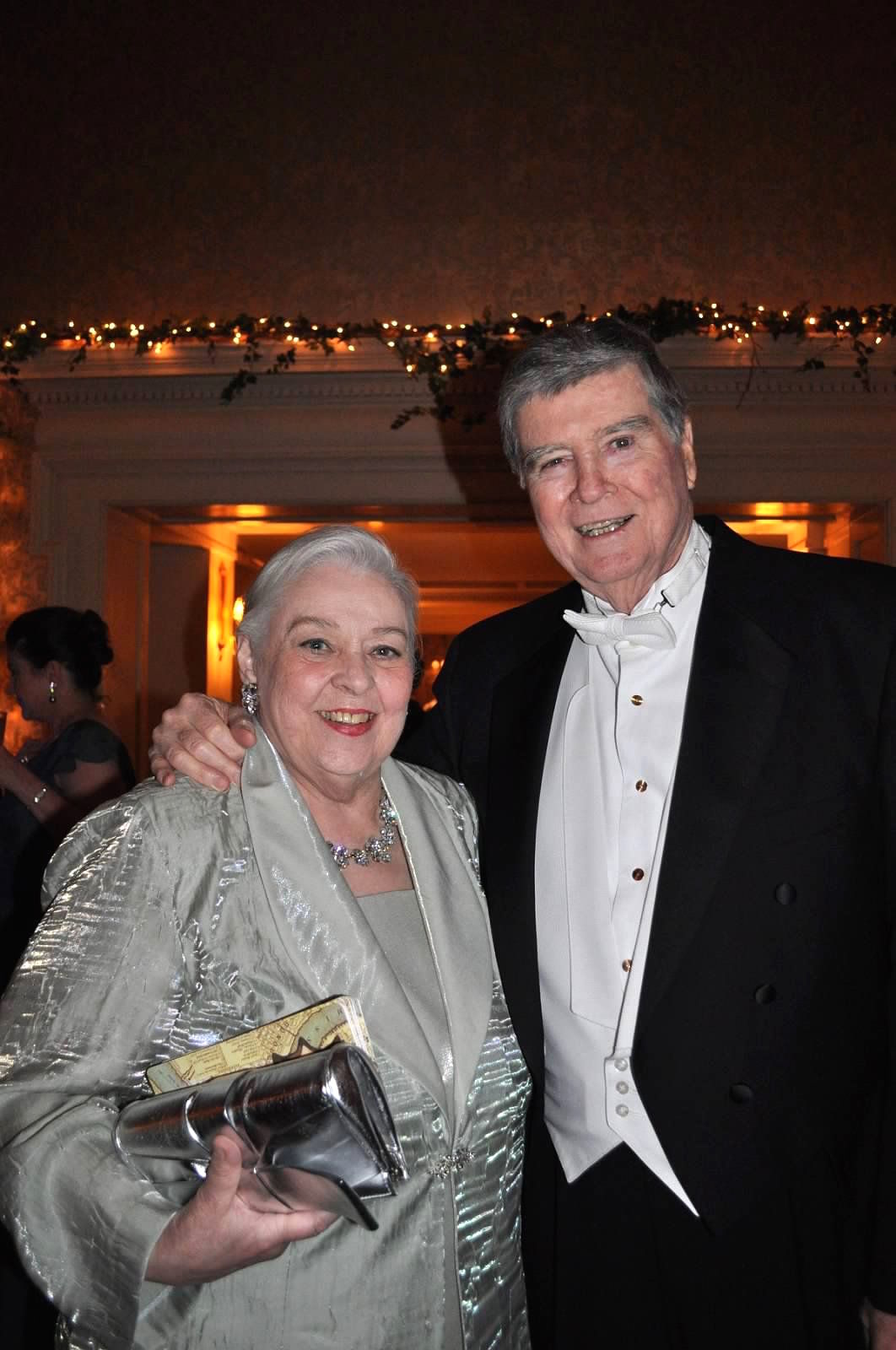 Hand in hand with his desire to
share his love of New Orleans with
Hand in hand with his desire to
share his love of New Orleans with
world's
best "free party!"
Above all, Dad was a
mentor--a mentor to us, his grandchildren, his
chefs
He'll
be deeply missed, but he leaves behind a legacy so
profound that
Dick
and his wife Lynn
❖❖❖
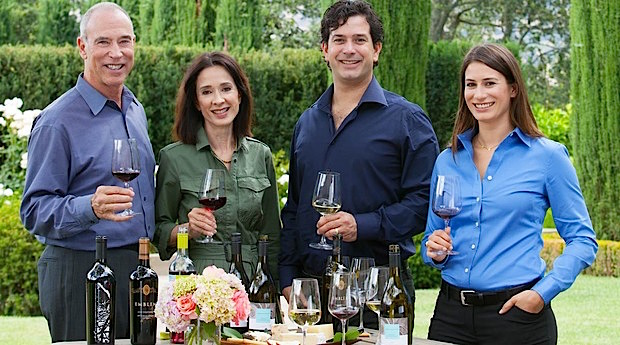 MICHAEL
MONDAVI WINES ARE A FAMILY AFFAIR
MICHAEL
MONDAVI WINES ARE A FAMILY AFFAIR
By John Mariani
One of the many tastings at the Charleston Wine
+ Food Festival (see above) was held by Michael
Mondavi Family Winery and hosted by Michael’s
son, Rob Jr.
Though the style of the winery’s labels
may differ, the family commitment to quality
over quantity is part of the lessons learned in
the saga of the Mondavi family. For
those not familiar with the byzantine ins and
outs of the Mondavi name in wine, here’s a
thumbnail history.
In 1943 Cesare Mondavi and his
sons Robert and Peter bought the old Charles Krug
winery in St. Helena, CA. Decades later a feud
drove Robert from the family business and into
opening his own Robert Mondavi Winery in 1966,
which became one of the most innovative in America
at the time, known for its Cabernet Sauvignons,
Pinot Noirs, and Chardonnays. In 1978
Robert entered into a business partnership with
the owners of Bordeaux’s Château Mouton-Rothschild
to make Opus One.
Meanwhile,
Peter Mondavi (who turned 100 this year) continued
to make wines under the Krug label. Robert sold
his namesake winery to Constellation Brands in
2004, then partnered with his son Tim and daughter
Marcia to create Continuum Estates. Robert
died in 2008. 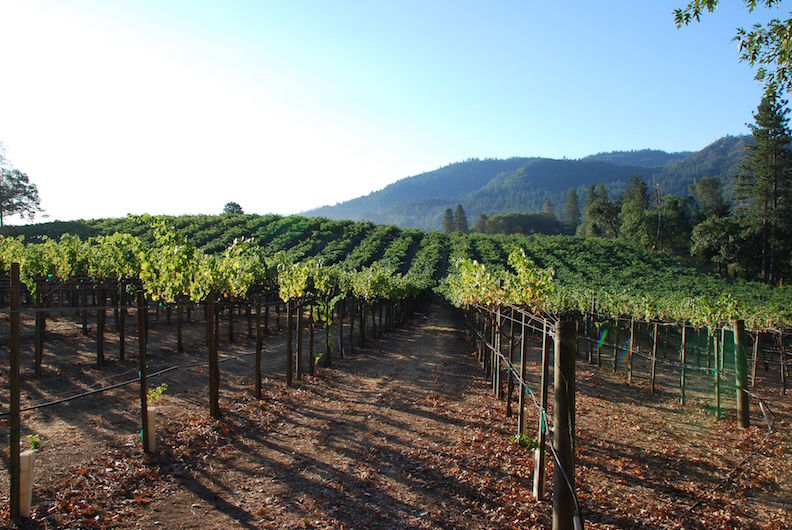
Robert’s other son, Michael,
went on to create his own Michael Mondavi Family
Winery (right),
with his wife, Isabel, son Rob and daughter Dina (above), and
in 1999 produced a very high-end Cabernet named M,
beginning with the 2005 vintage. Today the family
produces four different labels, each overseen by
an individual family member. These were the wines
in the Charleston tasting.
Isabel Mondavi Wines reflect
her delight in hospitality, meaning the bottlings
have an easy elegance without the blockbuster
mentality of so many Napa Valley wines. At the
tasting her 2012 Carneros Chardonnay ($30) was
shown (she also makes a Cabernet Sauvignon, Pinot
Noir and Rosé), which exemplified that style by
avoiding the over-oaked, caramel-flavored taste so
many of her colleagues—and a lot of American 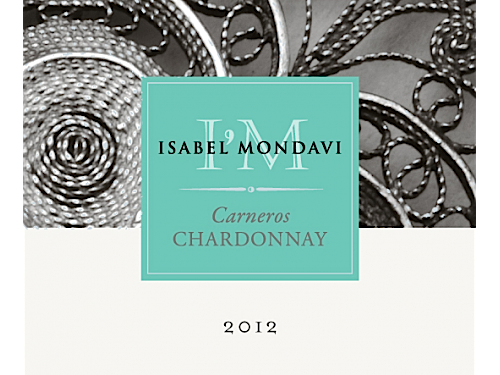 wine
drinkers--still prefer. At 13.7% alcohol it has just
enough California sun without overripe fruit. Its
color is quite pale for a Napa Chardonnay but
there is the clear taste of vanilla and a slightly
sweet finish.
wine
drinkers--still prefer. At 13.7% alcohol it has just
enough California sun without overripe fruit. Its
color is quite pale for a Napa Chardonnay but
there is the clear taste of vanilla and a slightly
sweet finish.
The Emblem label is Rob and Dina’s baby,
and represents the “passing of the torch” to the
next generation of Mondavis. The Cabernet
Sauvignon at the tasting was 2011 Oso
($60). A single-vineyard (above) bottling, it is a blend
with Petit Verdot to round out the evident tannins
in the wine, now beginning to loosen. There’s
a distinct oak component, a moderate alcohol level
of 14.4%, and the wine currently is somewhat
syrupy with dark cherry flavors, so I would
definitely wait to see how the wine knots together
in a few years.
We also tasted 2012 Emblem
Napa Valley Cabernet Sauvignon ($35),
blended with Petit Verdot and Petite Syrah, which
gives it plenty of forward fruitiness, as well as
old-vines Zinfandel from the Lake Country. The
wine is therefore lush with spices, but with a
snappy acid component, and a pleasant 13.9%
alcohol that makes it easy to drink right now.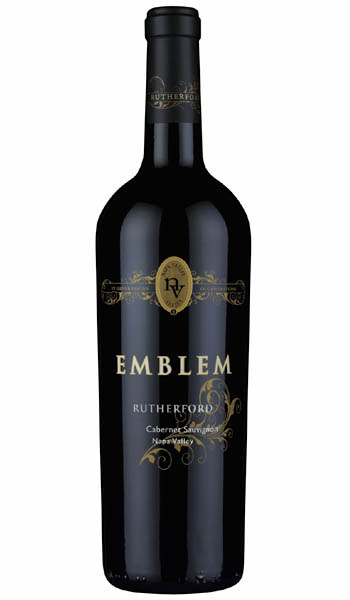
Upon finding a particularly
appealing and promising parcel of land high on
Atlas Peak, southeast of Napa, Dina Mondavi
exclaimed, "Dad, this place has animo,”
which is Italian for spirit. Her
father thereupon planted just 15 acres of Cabernet
Sauvignon vines in rocky, volcanic soil on slopes
up to 1,350 feet, assuring the grapes a nice, long
growing season that allows for later harvesting. The 2010 Animo
($85) is very fruited, with a long finish, almost
plummy at this stage, but at a moderate 14.3%
alcohol that should help that overripe flavor
ameliorate over time.
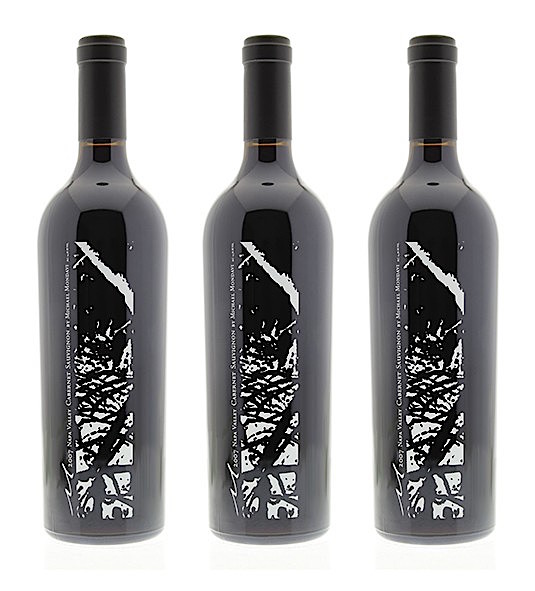 Michael’s M ($200)
comes from the same site, and, with Rob and winemaker Tony Coltrin, he very
carefully picks the best grapes after 20 treks
through the vineyard over a month, first hand harvesting at
the higher elevations, then the lower ones. A
post-fermentation maceration lasts 18-22 days,
followed by 22 months in French oak barrels, then
12 months in bottle.
Michael’s M ($200)
comes from the same site, and, with Rob and winemaker Tony Coltrin, he very
carefully picks the best grapes after 20 treks
through the vineyard over a month, first hand harvesting at
the higher elevations, then the lower ones. A
post-fermentation maceration lasts 18-22 days,
followed by 22 months in French oak barrels, then
12 months in bottle.
So taken was Michael with the quality of
the fruit picked, he decided M would be 100%
Cabernet Sauvignon, this at a time when almost all
other Napa vintners now blend in other Bordeaux
varietals like Merlot and Cabernet Franc. M,
therefore, evokes the big, massive Cabs of the
1970s, which could win awards but did so through
power rather than finesse. Since then, viticulture
has provided California vintners with better and
better grapes and healthier clones, so that the
intense tannins and inkiness of Cabs have in many
cases, like M, given way to refinement and
complexity. Indeed, Michael contends the most
recent vintages can be enjoyed immediately or laid
down for decades.
With fewer than 300 cases produced, it’s
going to be difficult for fans of the label to
wait that long, especially since the wine is on
allocation.
❖❖❖

WHICH IS WHY THEY NEVER
DISCUSSED POLITICS OR RELIGION
In New Orleans, an argument in a parking lot between years-long friends 64-year-old Clarence Sturdivant and his 66-year-old neighbor Walter Merrick over which beer is better —Budweiser or Busch — escalated in a until Merrick said Sturdivant shot him with a shotgun and left. Sturdivant insisted Merrick was actually the first person to pull a gun and he simply fired in self-defense. In the end, Sturdivant went to jail on "unrelated charges" and Merrick was issued a citation for aggravated assault.
WORST NEW FOODIE PHRASE OF 2015 (SO FAR)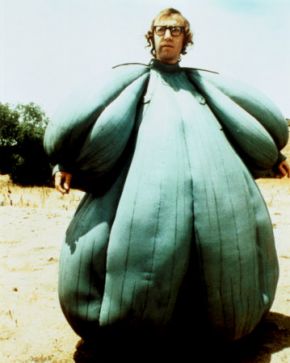
"We are a vegetable-forward
restaurant. This means your evening's menu
will be vegetable-leaning with meat and/or fish
playing alongside in a more supporting
role. Ingredients are based solely on the best
of what's available from our farmers, and
change upon season and inspiration."--Semilla
Restaurant, Brooklyn.
❖❖❖
Wine Pairing Tips When Dining Italian
 Food and wine pairing is the
simple process of identifying wines with flavors and
body that complement or contrast a particular dish.
Wine is a natural companion to food and the right
pairing can elevate both the wine and the dish. Like
food, wines have distinct qualities – some are
sweet, some fruity, and some, like a great steak,
are heavy and robust.
Food and wine pairing is the
simple process of identifying wines with flavors and
body that complement or contrast a particular dish.
Wine is a natural companion to food and the right
pairing can elevate both the wine and the dish. Like
food, wines have distinct qualities – some are
sweet, some fruity, and some, like a great steak,
are heavy and robust.
The key
principle to remember is there is NO one right
or “perfect” choice when pairing food and wine.
The main goal should be to enhance the dining
experience, taking into account your likes and
dislikes.
Listed are some useful tips to help you understand
food and wine pairing, especially in the context
of Italian dining.
TIPS
•
The body of the wine should match the richness of
the food.
•
Wine pairings can be complementary to bring out
similar flavors in the food OR contrasting to offer
balance other flavors in the dish. E.g., chicken in a
cream sauce with a buttery Chardonnay is complementary.
Spicy sopressata with a semi-sweet Lambrusco is
contrasting.
•
Rich, oily foods pair best with wines that have
full body and higher acidity.
•
Salty or spicy food can be balanced by sweeter
wines, such as Moscato or Riesling.
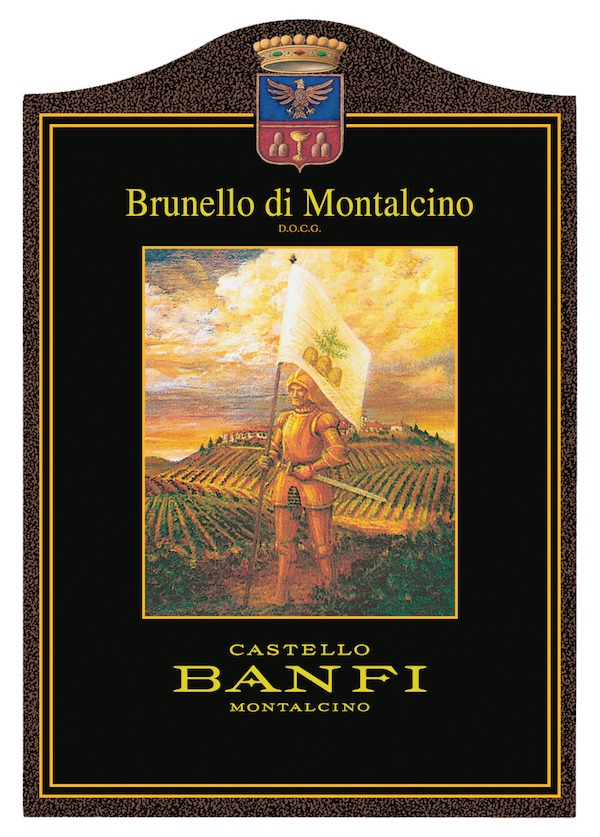 •
Tannin in wine reacts with protein; therefore
tannic reds like Cabernet Sauvignon or Brunello go well
with beef and lamb.
•
Tannin in wine reacts with protein; therefore
tannic reds like Cabernet Sauvignon or Brunello go well
with beef and lamb.
•
The traditional “rules” (e.g., red wine with red
meat) are not absolute. Experiment!
SUGGESTIONS
To start, bubbles are always a great way
to get the palate going:
Prosecco
 Sparkling Rose
Sparkling Rose
Dry Lambrusco
Lighter courses, such as salads, simply
prepared fish and poultry, and vegetarian dishes:
Pinot Grigio
Gavi
Frascati
Soave
Vermentino
Richer courses, such as roasts, stews,
grilled meats, and the like:
Chianti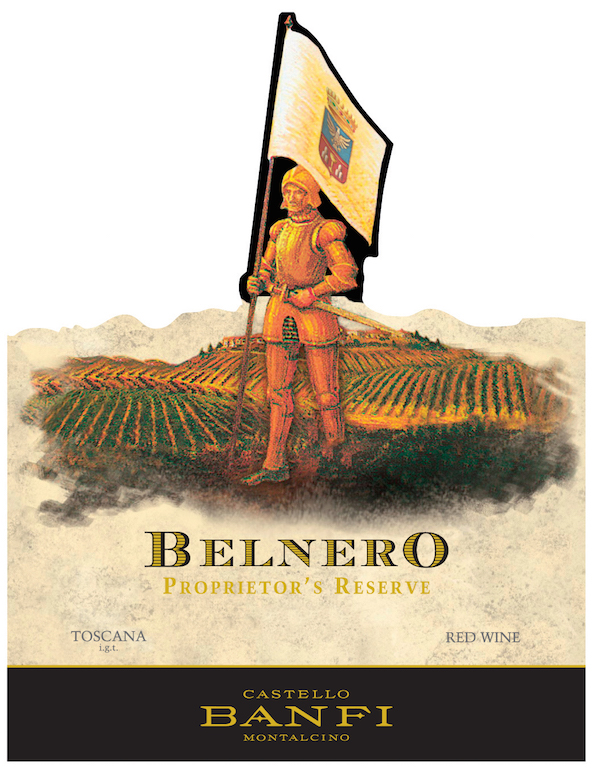
Brunello
Super Tuscan
Cabernet Sauvignon
Nero d’Avola
Syrah
For dessert, match sweet with sweet:
Brachetto
Late Harvest Moscadello
Any of John Mariani's books below may be ordered from amazon.com.
 I'm proud and happy to announce that my
new book, The Hound
in Heaven (21st Century Lion Books), has just
been published through Amazon and Kindle.
I'm proud and happy to announce that my
new book, The Hound
in Heaven (21st Century Lion Books), has just
been published through Amazon and Kindle. It is a novella, and for anyone who loves dogs, Christmas, romance, inspiration, even the supernatural, I hope you'll find this to be a treasured favorite. The story concerns how, after a New England teacher, his wife and their two daughters adopt a stray puppy found in their barn in northern Maine, their lives seem full of promise. But when tragedy strikes, their wonderful dog Lazarus and the spirit of Christmas are the only things that may bring back his master back from the edge of despair.
WATCH THE VIDEO!
“What a huge surprise turn this story took! I was completely stunned! I truly enjoyed this book and its message.” – Actress Ali MacGraw
“He had me at Page One. The amount of heart, human insight, soul searching, and deft literary strength that John Mariani pours into this airtight novella is vertigo-inducing. Perhaps ‘wow’ would be the best comment.” – James Dalessandro, author of Bohemian Heart and 1906.
“John Mariani’s Hound in Heaven starts with a well-painted portrayal of an American family, along with the requisite dog. A surprise event flips the action of the novel and captures us for a voyage leading to a hopeful and heart-warming message. A page turning, one sitting read, it’s the perfect antidote for the winter and promotion of holiday celebration.” – Ann Pearlman, author of The Christmas Cookie Club and A Gift for my Sister.
“John Mariani’s concise, achingly beautiful novella pulls a literary rabbit out of a hat – a mash-up of the cosmic and the intimate, the tragic and the heart-warming – a Christmas tale for all ages, and all faiths. Read it to your children, read it to yourself… but read it. Early and often. Highly recommended.” – Jay Bonansinga, New York Times bestselling author of Pinkerton’s War, The Sinking of The Eastland, and The Walking Dead: The Road To Woodbury.
“Amazing things happen when you open your heart to an animal. The Hound in Heaven delivers a powerful story of healing that is forged in the spiritual relationship between a man and his best friend. The book brings a message of hope that can enrich our images of family, love, and loss.” – Dr. Barbara Royal, author of The Royal Treatment.
 |
The Encyclopedia of American Food and Drink by John F. Mariani (Bloomsbury USA, $35) Modesty forbids me to praise my own new book, but let me proudly say that it is an extensive revision of the 4th edition that appeared more than a decade ago, before locavores, molecular cuisine, modernist cuisine, the Food Network and so much more, now included. Word origins have been completely updated, as have per capita consumption and production stats. Most important, for the first time since publication in the 1980s, the book includes more than 100 biographies of Americans who have changed the way we cook, eat and drink -- from Fannie Farmer and Julia Child to Robert Mondavi and Thomas Keller. "This book is amazing! It has entries for everything from `abalone' to `zwieback,' plus more than 500 recipes for classic American dishes and drinks."--Devra First, The Boston Globe. "Much needed in any kitchen library."--Bon Appetit. |
"Eating Italian will never be the same after reading John Mariani's entertaining and savory gastronomical history of the cuisine of Italy and how it won over appetites worldwide. . . . This book is such a tasteful narrative that it will literally make you hungry for Italian food and arouse your appetite for gastronomical history."--Don Oldenburg, USA Today. "Italian
restaurants--some good, some glitzy--far
outnumber their French rivals. Many of
these establishments are zestfully described
in How Italian Food Conquered the World, an
entertaining and fact-filled chronicle by
food-and-wine correspondent John F.
Mariani."--Aram Bakshian Jr., Wall Street
Journal.
"Equal parts
history, sociology, gastronomy, and just
plain fun, How Italian Food Conquered the
World tells the captivating and delicious
story of the (let's face it) everybody's
favorite cuisine with clarity, verve and
more than one surprise."--Colman Andrews,
editorial director of The Daily
Meal.com. "A fantastic and fascinating
read, covering everything from the influence
of Venice's spice trade to the impact of
Italian immigrants in America and the
evolution of alta cucina. This book will
serve as a terrific resource to anyone
interested in the real story of Italian
food."--Mary Ann Esposito, host of PBS-TV's
Ciao
Italia. "John Mariani has written the
definitive history of how Italians won their
way into our hearts, minds, and
stomachs. It's a story of pleasure over
pomp and taste over technique."--Danny Meyer,
owner of NYC restaurants Union Square
Cafe, The Modern, and Maialino.
|
 |
 |
 |
 |
 |
 |
 |
 |
 Everett Potter's Travel Report:
Everett Potter's Travel Report: 
 Eating Las Vegas
is the new on-line site for Virtual Gourmet
contributor John A. Curtas., who since 1995
has been commenting on the Las Vegas food
scene and reviewing restaurants for Nevada
Public Radio. He is also the
restaurant critic for KLAS TV, Channel 8 in
Las Vegas, and his past reviews can be
accessed at KNPR.org.
Click on the logo below to go directly to
his site.
Eating Las Vegas
is the new on-line site for Virtual Gourmet
contributor John A. Curtas., who since 1995
has been commenting on the Las Vegas food
scene and reviewing restaurants for Nevada
Public Radio. He is also the
restaurant critic for KLAS TV, Channel 8 in
Las Vegas, and his past reviews can be
accessed at KNPR.org.
Click on the logo below to go directly to
his site.

Tennis Resorts Online: A Critical Guide to the World's Best Tennis Resorts and Tennis Camps, published by ROGER COX, who has spent more than two decades writing about tennis travel, including a 17-year stretch for Tennis magazine. He has also written for Arthur Frommer's Budget Travel, New York Magazine, Travel & Leisure, Esquire, Money, USTA Magazine, Men's Journal, and The Robb Report. He has authored two books-The World's Best Tennis Vacations (Stephen Greene Press/Viking Penguin, 1990) and The Best Places to Stay in the Rockies (Houghton Mifflin, 1992 & 1994), and the Melbourne (Australia) chapter to the Wall Street Journal Business Guide to Cities of the Pacific Rim (Fodor's Travel Guides, 1991).


MARIANI'S VIRTUAL GOURMET
NEWSLETTER is published weekly. Editor/Publisher: John
Mariani.
Editor: Walter Bagley. Contributing Writers: Christopher Mariani,
Robert Mariani, Misha
Mariani,
John A. Curtas, Edward Brivio, Mort Hochstein,
Andrew Chalk, Dotty Griffith and Brian Freedman. Contributing
Photographers: Galina Dargery, Bobby
Pirillo. Technical Advisor: Gerry McLoughlin.
To un-subscribe from this newsletter,click here.
© copyright John Mariani 2015

